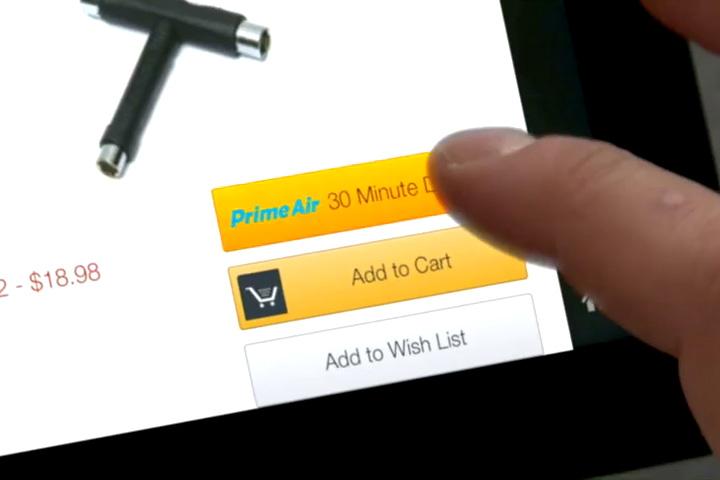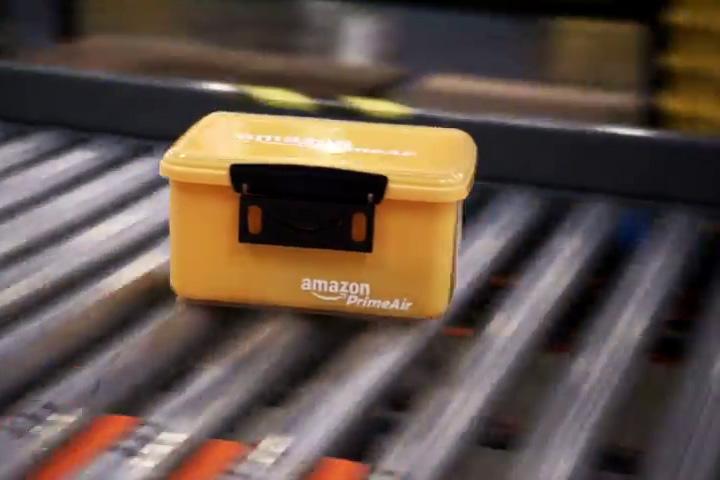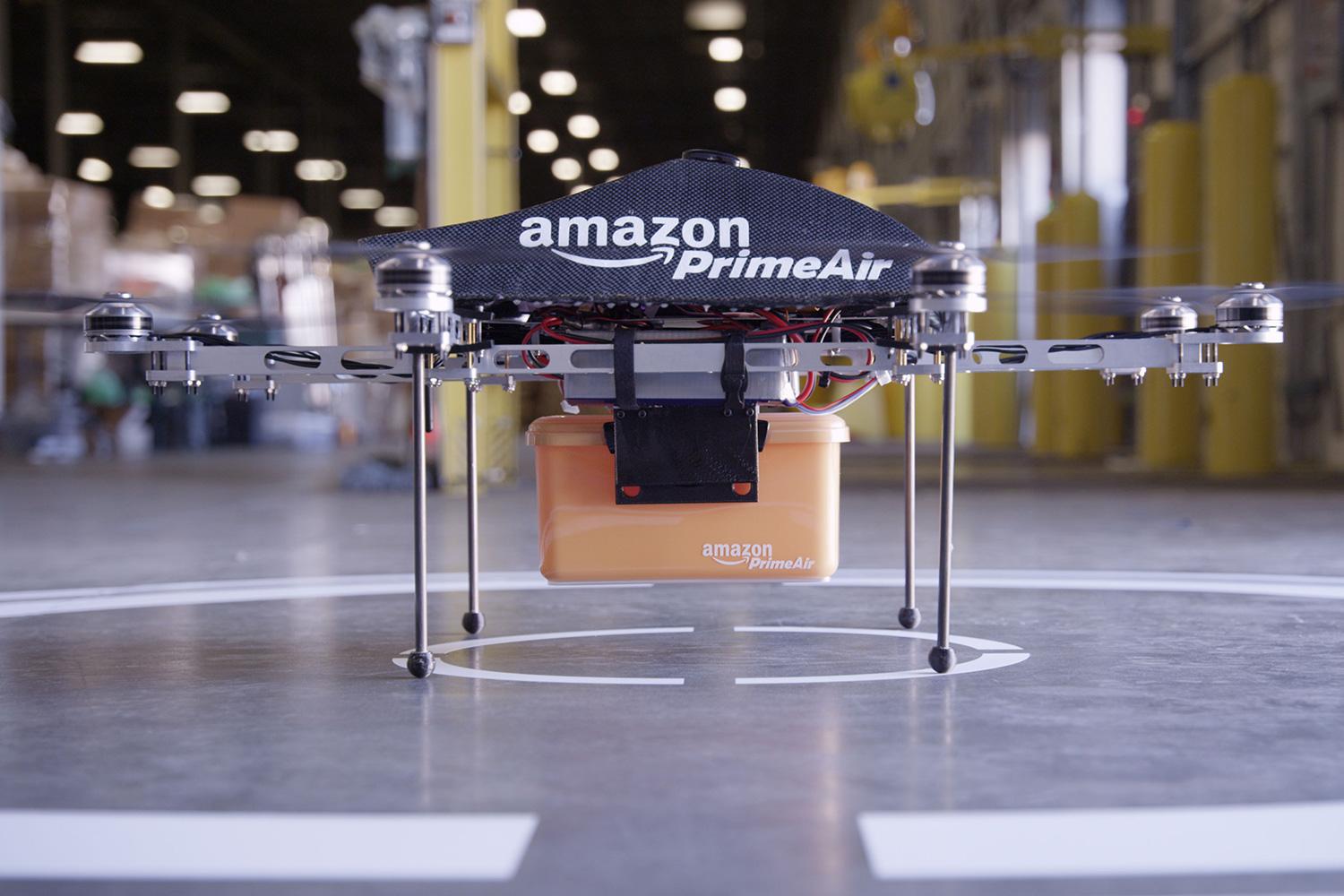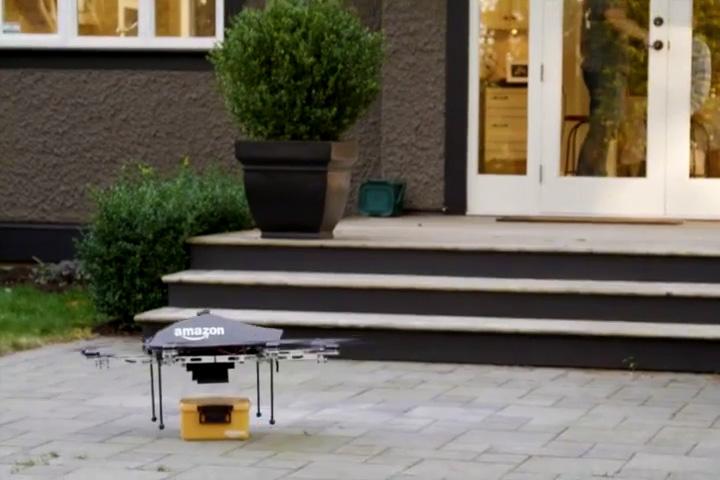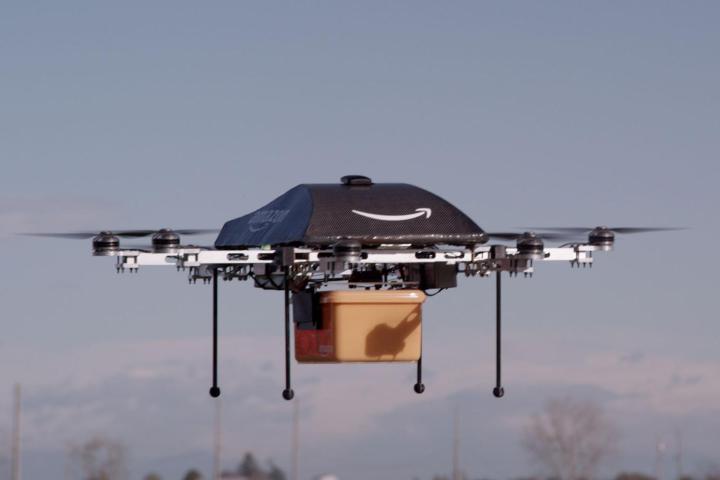
It’s true – Amazon plans to deliver your packages using flying robots. If that news, announced by CEO Jeff Bezos on Sunday night’s episode of “60 Minutes,” sounds like an absurd PR stunt meant to spur Amazon’s Cyber Monday sales, you aren’t alone – not by a long shot.
“So far, only a single commercial UAS operator has been approved to operate, and it is in the Arctic.”
Most of the Internet, it seems, gave a collective “Psh, yeah, whatever, dude” upon hearing the news of Prime Air, which Bezos says will one day enable some Amazon customers to receive their purchased items within 30 minutes thanks to GPS-enabled unmanned aerial vehicles (UAVs) – also known as unmanned aircraft systems (UAS), or, of course, drones.
Our skepticism and disregard for Prime Air is reasonable, to a certain extent, given the range of obstacles that will keep Amazon’s drones down for years. (Not to mention gun slingers’ frothing desire to shoot the company’s drones out of the sky.) But love it or hate it, the Era of UAVs is coming – and Amazon will likely be there from day one. It just has to leap over a number of hurdles before Prime Air takes off.
Please, sir, may I have a Certificate of Authority?
The most obvious barrier is Federal Aviation Administration regulations, which currently prohibit the use of UAS for any commercial purpose. It’s not legal for photographers to make money off pictures shot using drones, and it’s sure as hell not legal for Amazon to start launching robotic deliverymen into the sky.
In order for an organization to use a UAV for some official purpose – be it business, education, or policing – the organization must receive what’s known as a Certificate of Authority. According to a list published by the Electronic Frontier Foundation (EFF), those mostly go to government organizations, like the Department of Homeland Security or the U.S. Navy, or to universities. And it’s highly unlikely that Amazon could snag a Certificate of Authority anytime soon: The FAA tells me that, “so far, only a single commercial UAS operator has been approved to operate, and it is in the Arctic.”
All is not lost for Amazon Prime Air, however. As Bezos pointed out, the service won’t go into effect until at least 2015. That’s a key year; Congress passed a bill in 2012 mandating that the FAA open U.S. airspace to commercial UAS by September 30, 2015. But before we get to that point, a whole heck of a lot needs to happen, some of which will take years to accomplish.
Let the testing begin!
At the top of the FAA’s to-do list is the establishment of six sites to test UAS technology. Twenty four states have applied to host the test sites, where the FAA will be able to figure out how best to integrate UAVs into U.S. airspace safely. The agency is scheduled to announce its choice of test site locations by the end of 2013 – and when it does, Amazon and countless other companies are expected to bum rush these sites.
“With the test sites being assigned, it’ll provide industry an opportunity to go to those states and test their systems,” says Mario Mairena, Government Relations Manager for the Association for Unmanned Vehicle Systems International (AUVSI), the world’s largest non-profit group devoted to the advancement of UAS and other robotics. And if Amazon plans to get in on the drone game in 2015, it’ll need to be right there with every other drone-centric business.
Once these test sites are up and running, one of main goals will be figuring out how to relax the restrictions on flying UAVs. At the moment, even those organizations with a coveted Certificate of Authorization from the FAA must abide by a number of rules: UAS may not weight more than 25 pounds, must remain under an altitude of 400 feet, and cannot leave a pilot’s line of sight. It’s that last one especially that needs to change for Amazon before Prime Air – which Bezos says will have a range of 10 miles from an Amazon distribution center – can launch. (And some experts don’t believe the FAA will allow autonomous, long-range UAS for years, if ever.)
Have tech, can deliver
As for the technology needed to make Prime Air a reality, Mairena says it “absolutely” already exists. Even if that means having a fleet of hundreds of drones delivering packages to homes using only GPS coordinates? “Absolutely,” he reiterates. (In fact, a popular delivery company in China called SF Express has already begun testing a service like Prime Air.) The one area of concern is what the FAA calls “sense and avoid” (SAA) systems that would prevent Amazon’s drones from buzzing into houses, trees, or your dog. “Minimum standards” for SAA will need to be established before anything like Prime Air can operate, according to the FAA’s UAS “road map” (pdf) released in early November.
It’s not clear who would make Amazon’s delivery drones, but given that it already pumps out gadgets like the Kindle e-book readers and tablets, it seems more than likely that Amazon will just make its own specialized UAS.
Consider that the FAA has already released a “road map” for how it plans to start launching commercial drones into the air safely by 2015; that hundreds of U.S. businesses are chomping at the bit to get a piece of the $82 billion economic impact AUVSI expects commercial drones will have in the U.S. over the next decade; and that Paul Misener, Amazon’s VP of Global Public Policy, already has a working relationship with the FAA – updating federal regulations may be the least of Amazon’s concerns.
Fear of flying (robots)
The real problem, says Mairena, is that people are freaked out by “drones” – in fact, he corrected me when I let the nasty word slip during our conversation. “UAS, please,” he said. As with any misunderstood technology, the only solution is better educating the public about what UAS can and cannot do.
“A lot of citizens believe that you can weaponize UAS. Nothing could be further from the truth.”
“A lot of citizens believe that you can weaponize UAS,” says Mairena. “Nothing could be further from the truth – you cannot weaponize UAS in domestic airspace.” (In other words, doing so may be technically possible, but is highly illegal.) Privacy is also a concern, he says, with some worried that these flying robots will lead to the type of “constant surveillance” allowed by military drones. This too is a misconception because non-military UAS “are battery operated, and their flight times may range between 15 and 90 minutes,” he says, making it difficult for them to spy on anyone for extended periods – to say nothing of peeping Toms livestreaming 90 minutes of your bedroom window.
“These systems are going to be used for a specific scope and purpose to do the job that Amazon, for example, would want it to do – and that’s a delivery system,” says Mairena.
True as that may be, the AUVSI recognizes how much work it will take before people begin accepting drones UAS into everyday life – and they have less than two years to do it.
Is that enough time for Amazon, or any other company, to get the public cheering for UAVs speckling our skies? I think it is – we’ve overcome fears of the Internet and smartphones is as much time. And we may have little choice but to get used to it, as the FAA expects at least 15,000 of the buggers to be zipping around within the next six years.
Despite some monkey-brain revulsion to UAVs, I, for one, welcome our robot peons – and delivering me a fresh pair of warm socks in less than an hour sounds like the perfect job for them.
